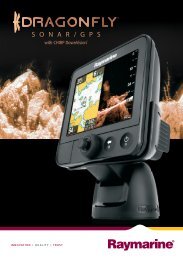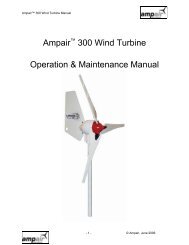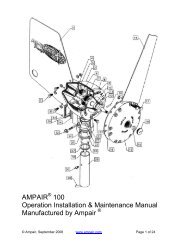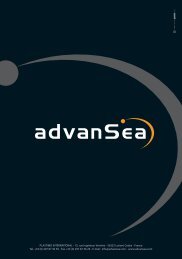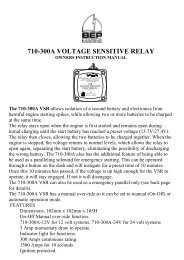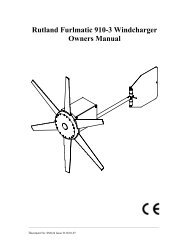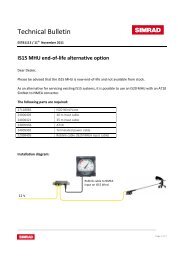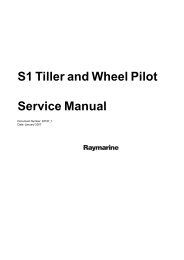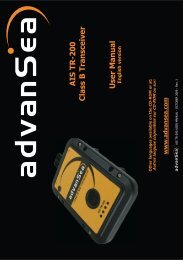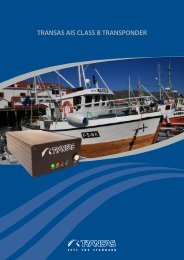NAV4 Plus User Guide Issue 2 - ICS Electronics Limited
NAV4 Plus User Guide Issue 2 - ICS Electronics Limited
NAV4 Plus User Guide Issue 2 - ICS Electronics Limited
Create successful ePaper yourself
Turn your PDF publications into a flip-book with our unique Google optimized e-Paper software.
<strong>NAV4</strong>plus <strong>User</strong> <strong>Guide</strong><br />
INTRODUCTION<br />
What Is NAVTEX?<br />
NAVTEX is a world-wide system for the broadcast and automatic<br />
reception of maritime safety information (MSI) in English on 518kHz<br />
(other local languages may be available on 490kHz) by means of a<br />
narrow-band direct-printing telegraphy. NAVTEX provides shipping<br />
with navigational and meteorological warnings and urgent<br />
information automatically from a dedicated receiver.<br />
NAVTEX is a component of the IMO/IHO world-wide Navigational<br />
Warning Service (WWNWS) as defined by IMO Assembly resolution<br />
A.706(17). It is included within the Global Maritime Distress and<br />
Safety System (GMDSS). Since 1 August 1993, NAVTEX receiving<br />
capability has become mandatory equipment for certain vessels<br />
under the provisions of the International Convention for the Safety of<br />
Life at Sea (SOLAS).<br />
NAVTEX broadcast information is available to all seafarers, free of<br />
charge.<br />
How Does NAVTEX Work?<br />
NAVTEX transmissions are sent on 518kHz from stations situated<br />
world-wide, some of which also transmit a local language service on<br />
490kHz. The power of each transmission is regulated so as to avoid<br />
the possibility of interference between transmitters. Each station is<br />
allocated a 10-minute time slot every 4 hours so that many stations<br />
can share the same frequency.<br />
Nav4plus users can set-up filtering to print only specific message<br />
types from selected stations. <strong>User</strong>s can choose to print information<br />
from just the single station that serves the sea area around their<br />
position, or from a number of stations.<br />
NAVTEX Message Headers<br />
Each NAVTEX message header has a four figure identifier eg.<br />
GA59. This defines the station that transmitted the message and the<br />
category or type of message that follows.<br />
• The first letter tells you which NAVTEX station the message is<br />
from (eg. G)<br />
• The second letter tells you the category of the message. (e.g. A)<br />
• The last two digits are the individual message serial number<br />
6




